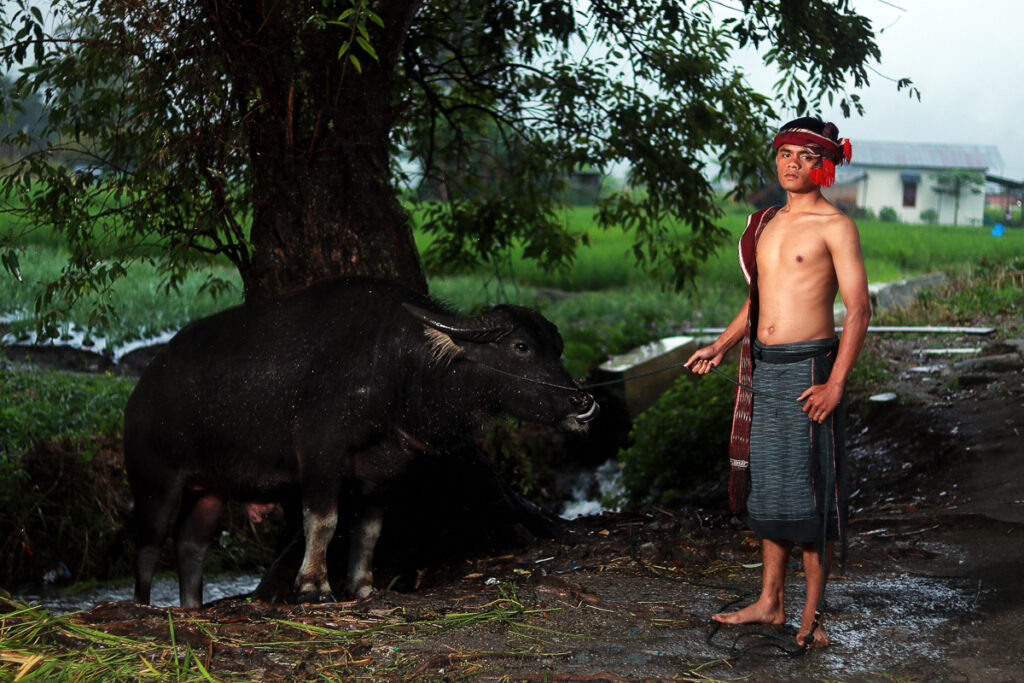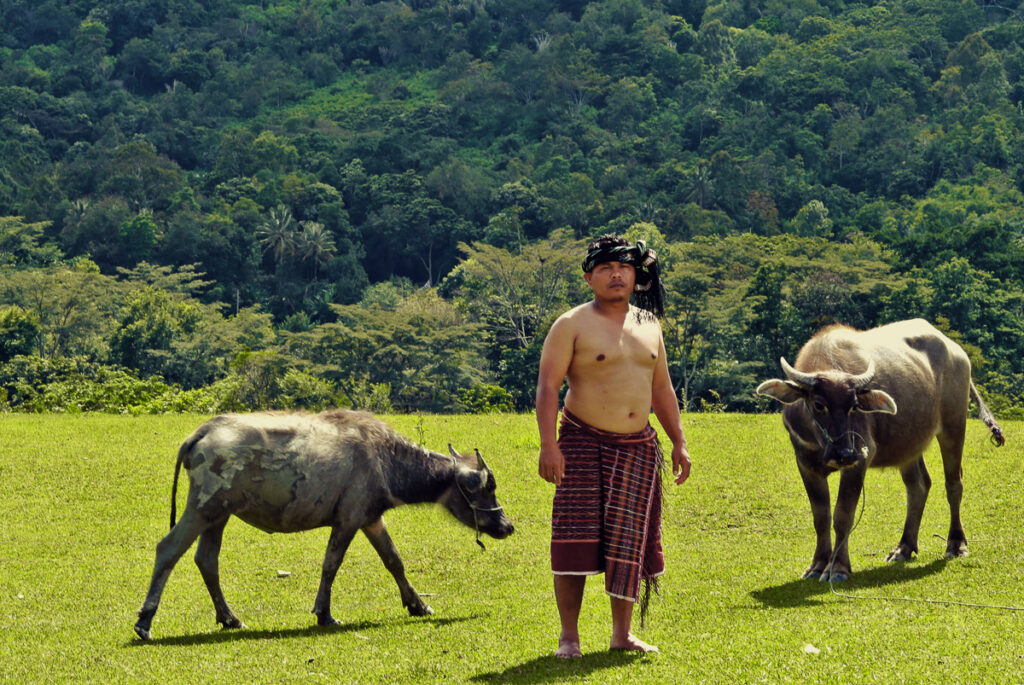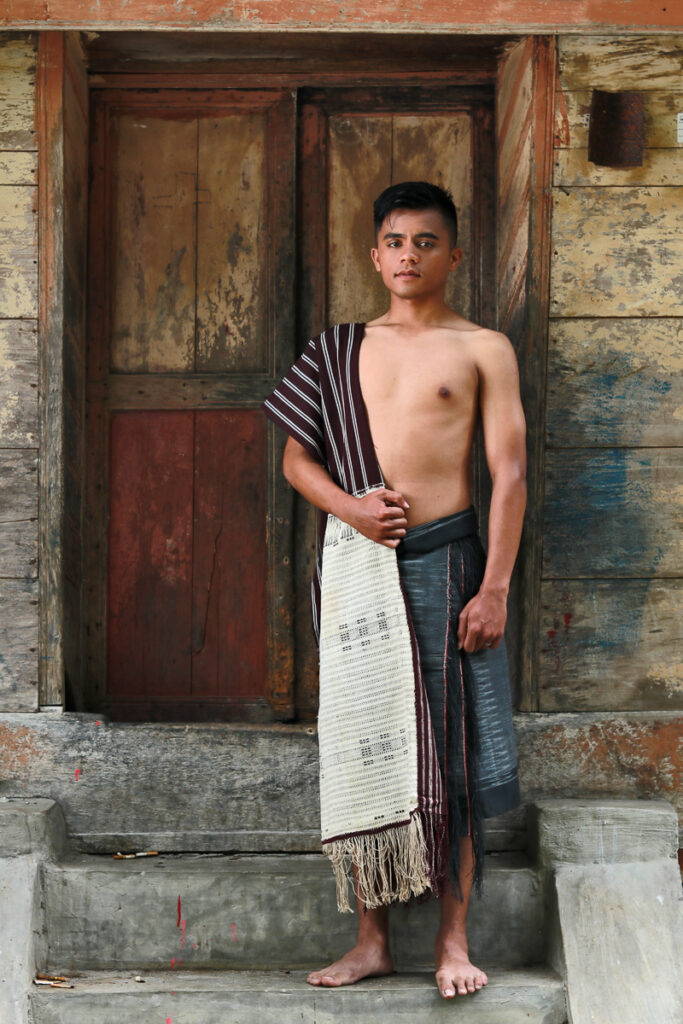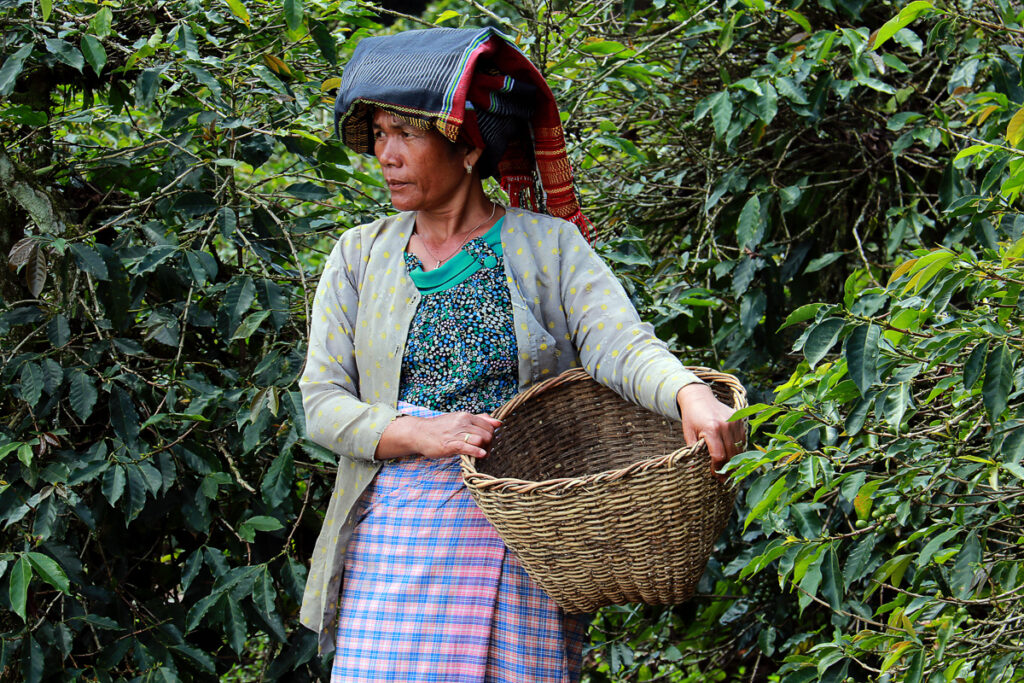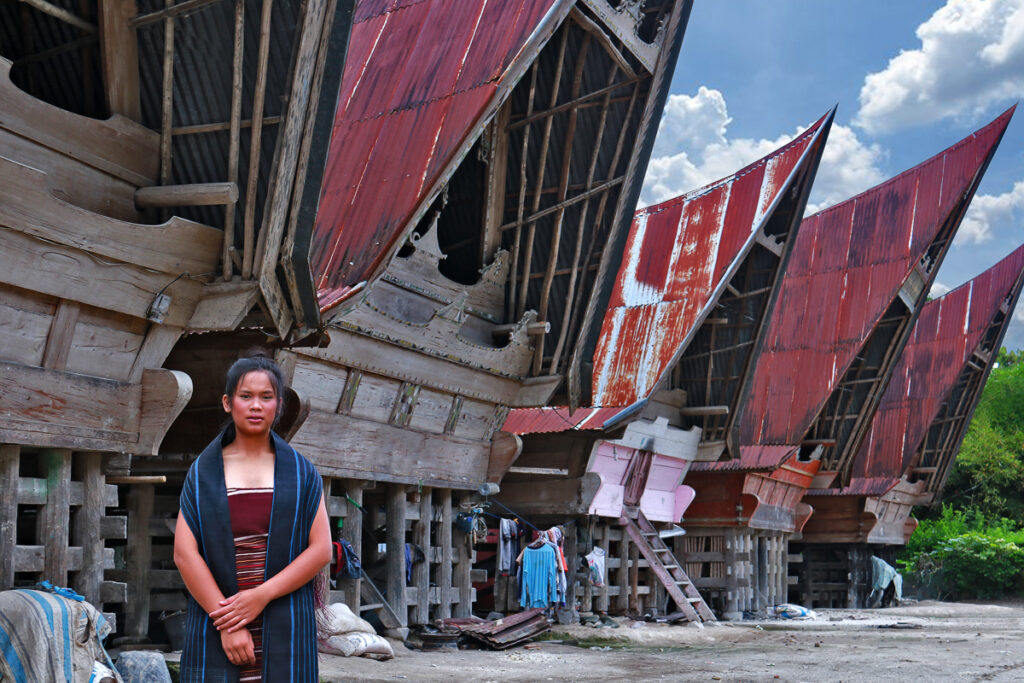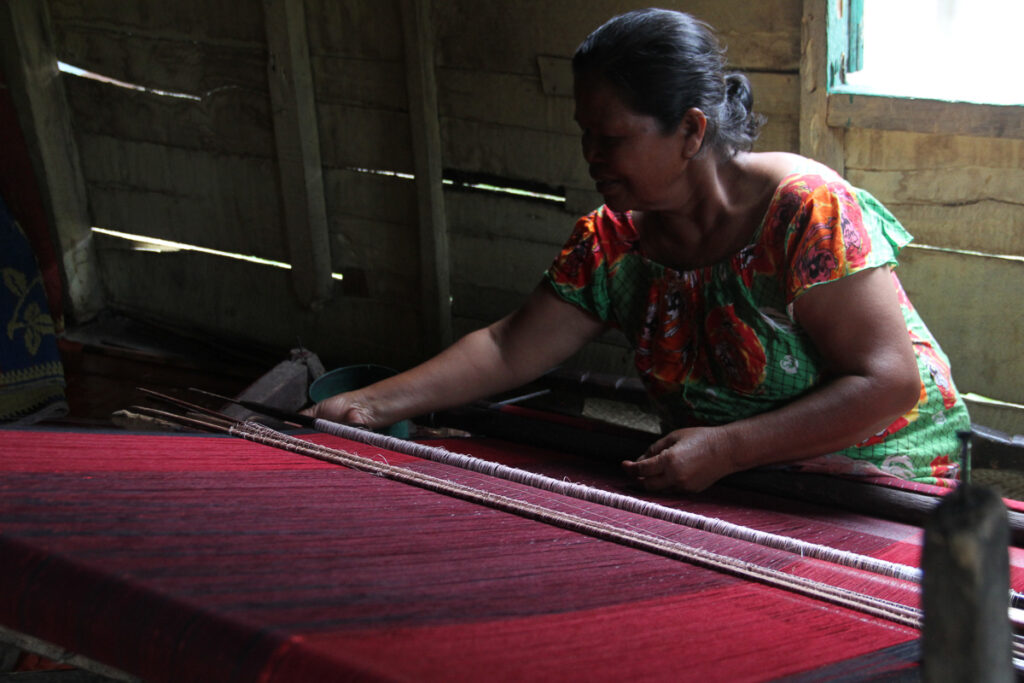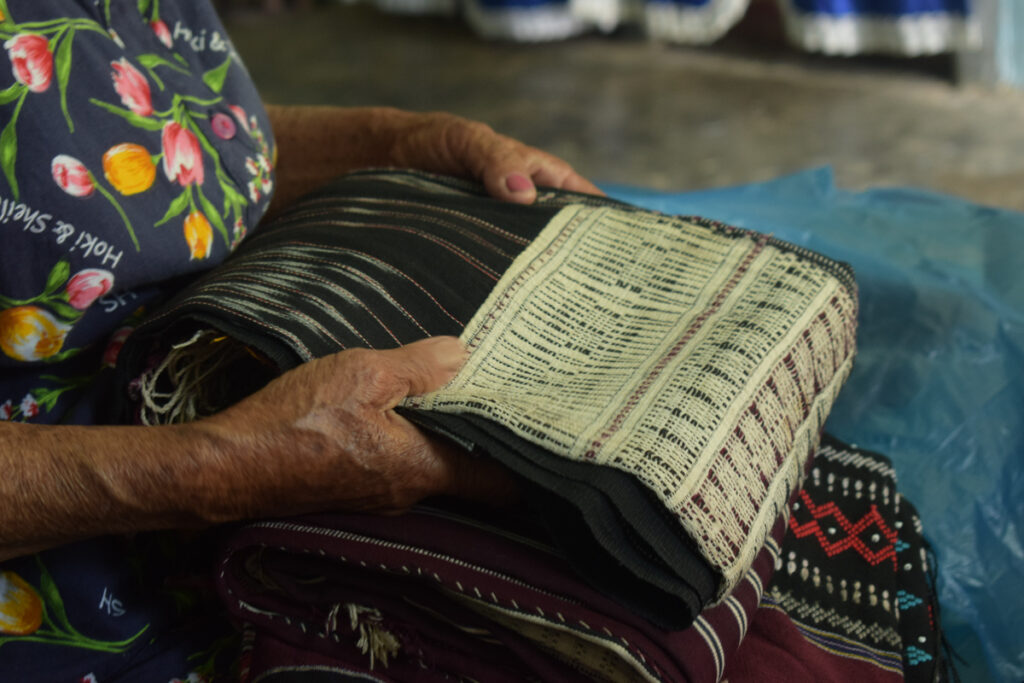Dewi Sartika Bukit describes a photography project that aims to inspire a new generation to admire the distinct ulos weaving tradition of Tono Batak.
“Arta tading tadingan”
This is a phrase commonly used by Batak Toba people to describe things such as relics from their ancestors. Philosophically the phrase “arta tading-tadingan” connotes something that gives encouragement/pride to the tribe or place where they come from. (Arta is harta in Indonesian, meaning “treasure”; and tading tadingan is peninggalan in Indonesian, meaning “legacy”).
I hope to contribute to this with my photography book project, has been running for almost three years. There were times where I was not sure where to start. Nevertheless, I have a vivid dream that ulos will be better known in Indonesia, even internationally.
Even though Bataknese blood runs in my vein, I was not brought up in Batak land (Tano Batak). But destiny took me on a journey that required me to stay in Tano Batak for 30 days. This opened my eyes to the richness of my ancestral land. The land itself is fertile, the culture is dense and the natural beauty is extraordinary.
Afterwards, my new journey started again when I set foot on Tano Batak with a different “heart”. There were many questions in my head about the existing culture, including the ulos traditions for every life passage, from birth to death. Maybe for many people, ulos is a fabric that symbolises an event. But for me, its meaning extends beyond that, into fashion.
There are various types of ulos in Tano Batak and every Batak tribe have a different kind of fabric and name for it. This time I will be concentrating on ulos from Batak Toba in the Humbang Hasundutan Regency.
The need for ulos in Batak community is very high because of all of the official events. To cater to this demand, ulos is now being made with machines. The handlooms are being left behind.
Ulos weavers are now very difficult to find. Although we can still visit a traditional Batak house complex of weavers in Samosir, this is not the same in other districts of Danau Toba area. There are lots of weavers living in the less popular tourism destination districts who find it difficult to sell their woven ulos. In the end, they stop making it because there is no money to buy yarn.
For me, it is quite poignant. A mother came to me and said that the ulos weaving community that she has established had to stop because there were no threads.
I pursued several opportunities for grant funding to help them to get threads, but without success. I was very disappointed: this become personal to me. As a photographer and lecturer (at that time), I was thinking hard about what could I do to make a modest improvement in the situation faced by the weavers in Tano Batak, especially in Humbang Hasundutan Regency.
I believe the photography book is the most appropriate medium to reintroduce ulos to other areas in Indonesia and the international world. This can be not only a cultural tool but also move towards fashion that appeals to a young generation. Of course, when the enthusiasts of ulos develop then the market will be bigger and the weavers will be able to earn income to buy yarn.
During the three years of photographing, I gained much experience dealing with the local residents in their various characters. 90% of the local residents only used their own local language in their own accent. At that time, I purposely brought a local team from those areas, so there won’t be any language barrier.
After I initially explained my intention of why I am doing the shoot and research, the weavers accepted it with open arms. They supported my good intentions, even though they don’t really know if what I am doing will be able to help them or if the outside world will have more interest in them. Nonetheless, the most important thing for me is to start doing something—better than nothing!
Of course, problems appeared here and there. Many weavers that expected me to buy their ulos or just give some donation. I do understand their situation and I did prepare some budget for their “pocket money”. I was also supported by many parties, especially the local community that took me to many beautiful places to see reality and to take pictures.
This project is not finished yet, I do hope I still have time and have more funding support to complete my photograph from the documentary side that will tell a story about their real daily life.
All the Ulos I photographed were collected from local residents and some belonged personally from the wife of the Humbang Hasundutan district head, all origin from Batak Toba.
For the young generation, I do hope this book project can also inspire millennials to love ulos more, so in the future, it can develop into a more contemporary fashion creative industry without leaving history behind.
English translation by Resika Tikoalu
Photographer: Dewi Sartika Bukit, M.Sn; assistant photographer: Christian Sihite; fashion stylist: Novum Aeris
Muses :
- Belgiana Purba
- Rebecca Hutabarat
- Rachel Sihite
- Adam Bakkara
- Kartini Sitanggang
- Desmon Purba
- Nelly Sianturi
Author
 Dewi Sartika Bukit is an Indonesian photographer and lecturer. Since 2018, she is one of the interviewees for the OPREK (Operational and technique of Photography) from BEKRAF (the Creative Economy Agency of Indonesia). Previously she taught in Politeknik Seni Yogyakarta and Sekolah Tinggi Multi-Media (MMTC) Yogyakarta for six years before she moved to teach photography for the community also the micro and medium enterprise workers all around Indonesia with BEKRAF. She finished her Bachelor of Art and Master of Art from Indonesian Institute of the Arts Yogyakarta. And in 2019 she was awarded as Canon Srikandi. In 2017 she started her research about Ulos when she joined Seniman Mengajar, a program from the Indonesian Ministry of Education and Culture, and on the same year, she started self-volunteering with the Politeknik Seni Yogyakarta in Humbang Hasundutan, where on the next year she was also teaching the micro and medium enterprise workers on that area with BEKRAF. Then in 2019 BEKRAF funded her to focus further on her Ulos research.
Dewi Sartika Bukit is an Indonesian photographer and lecturer. Since 2018, she is one of the interviewees for the OPREK (Operational and technique of Photography) from BEKRAF (the Creative Economy Agency of Indonesia). Previously she taught in Politeknik Seni Yogyakarta and Sekolah Tinggi Multi-Media (MMTC) Yogyakarta for six years before she moved to teach photography for the community also the micro and medium enterprise workers all around Indonesia with BEKRAF. She finished her Bachelor of Art and Master of Art from Indonesian Institute of the Arts Yogyakarta. And in 2019 she was awarded as Canon Srikandi. In 2017 she started her research about Ulos when she joined Seniman Mengajar, a program from the Indonesian Ministry of Education and Culture, and on the same year, she started self-volunteering with the Politeknik Seni Yogyakarta in Humbang Hasundutan, where on the next year she was also teaching the micro and medium enterprise workers on that area with BEKRAF. Then in 2019 BEKRAF funded her to focus further on her Ulos research.

